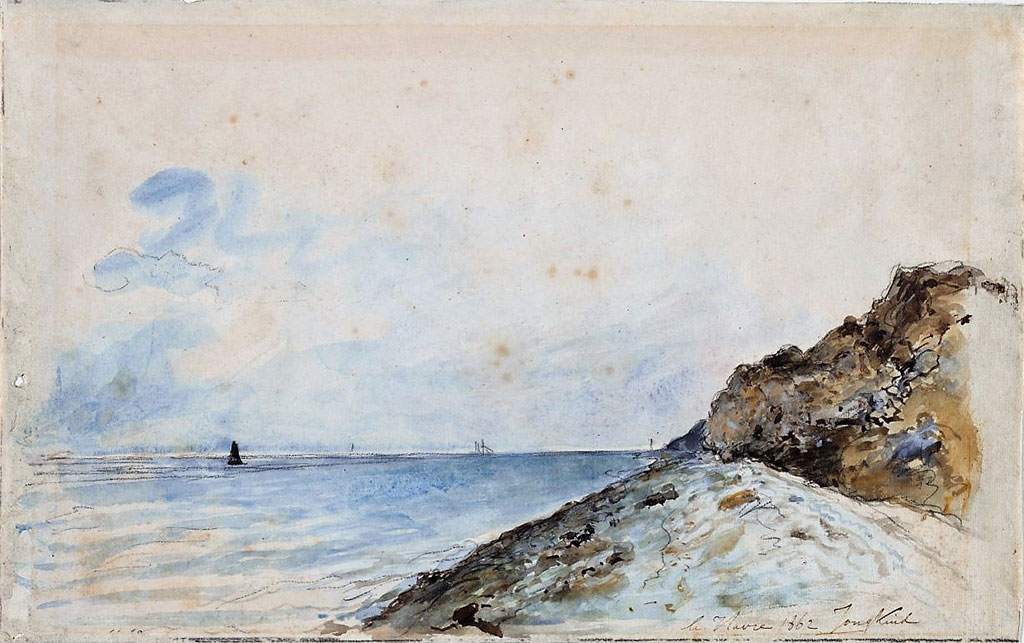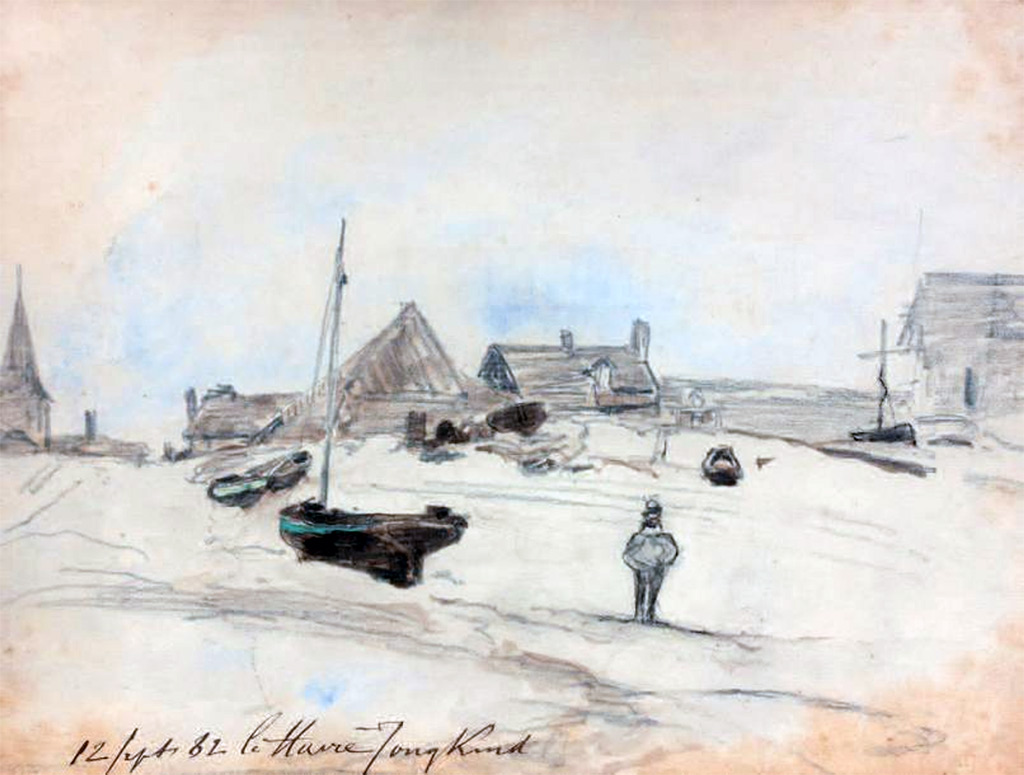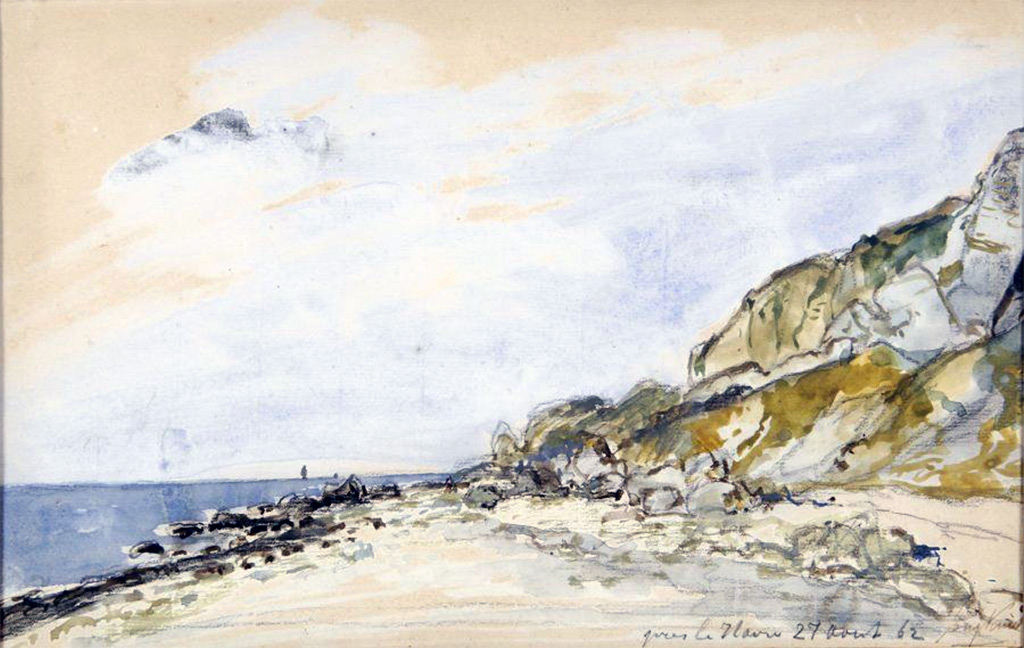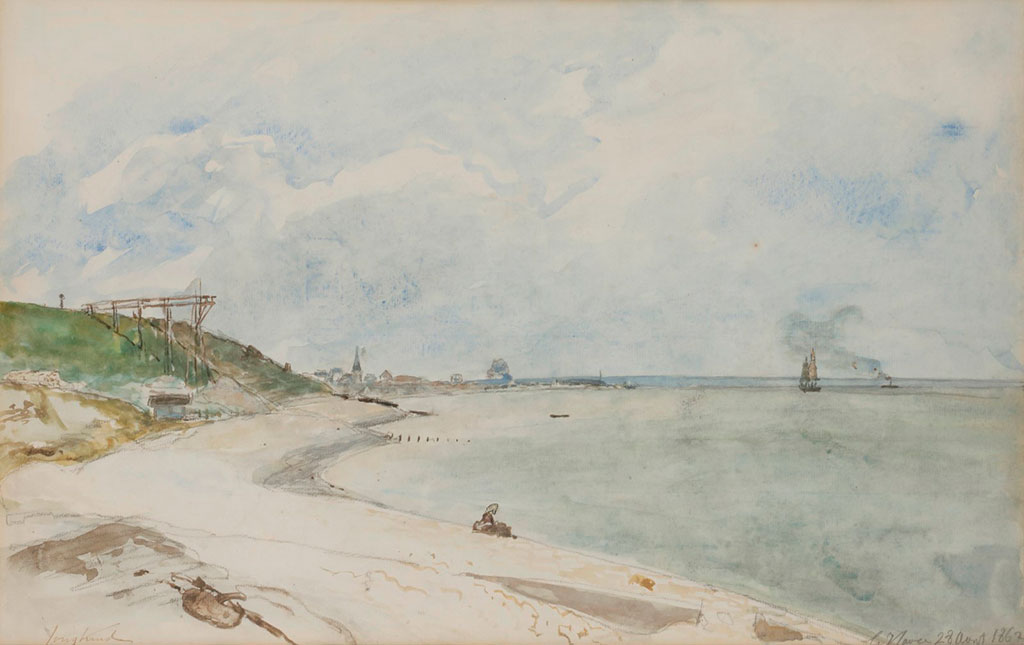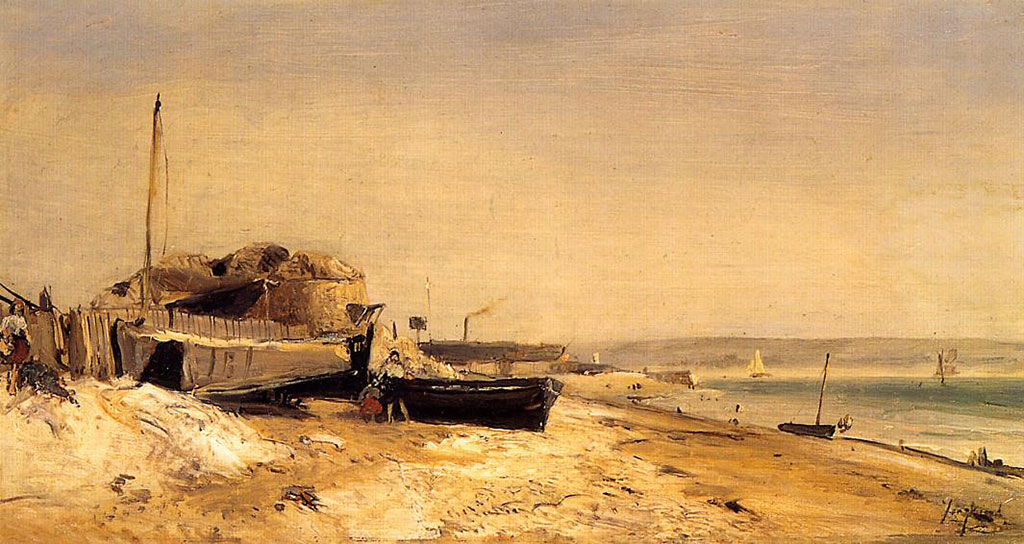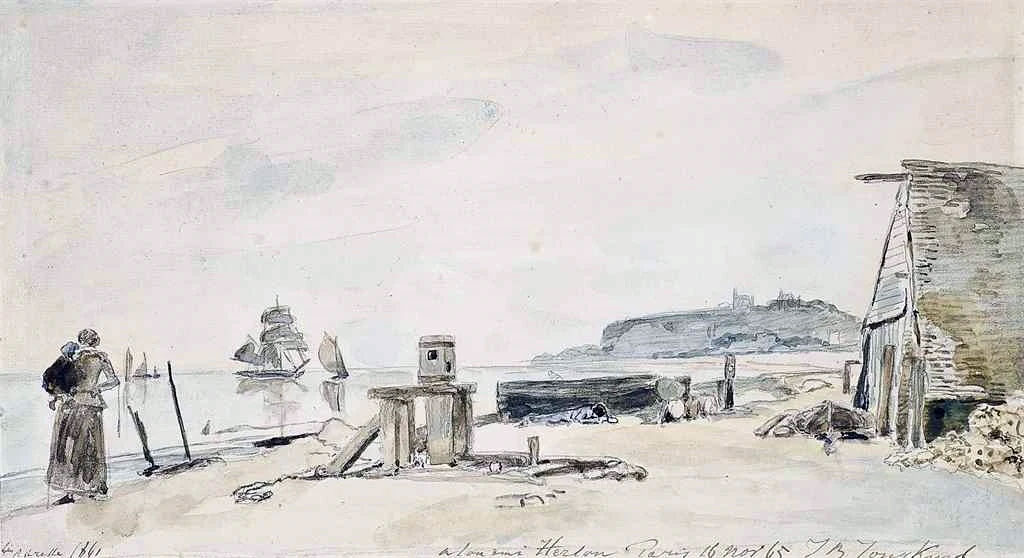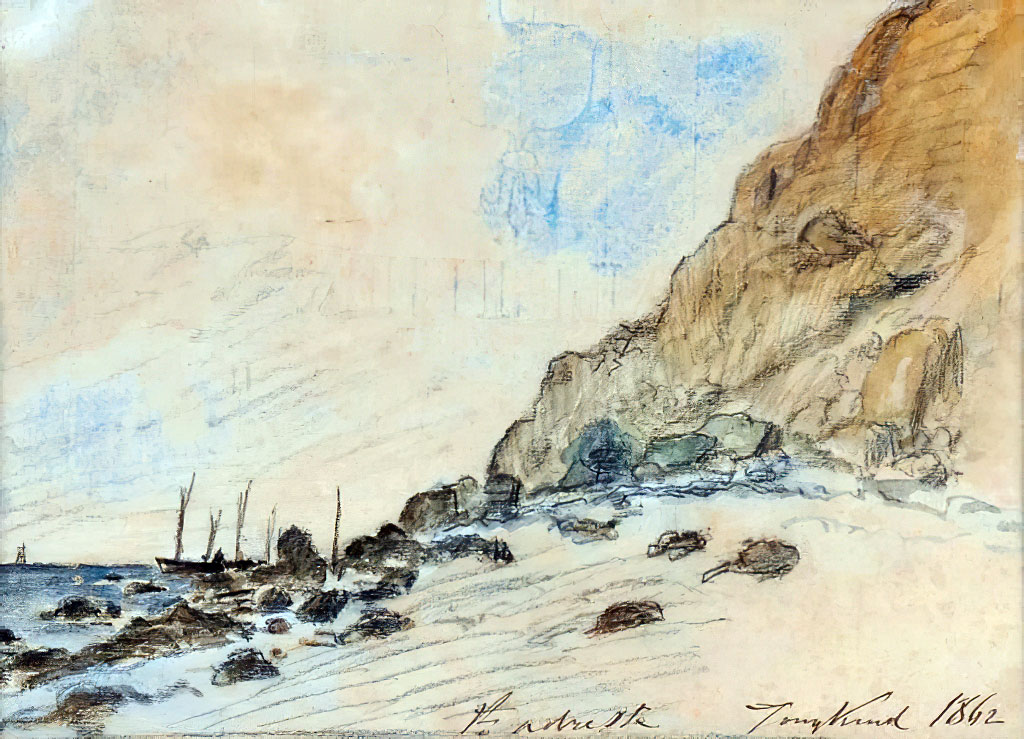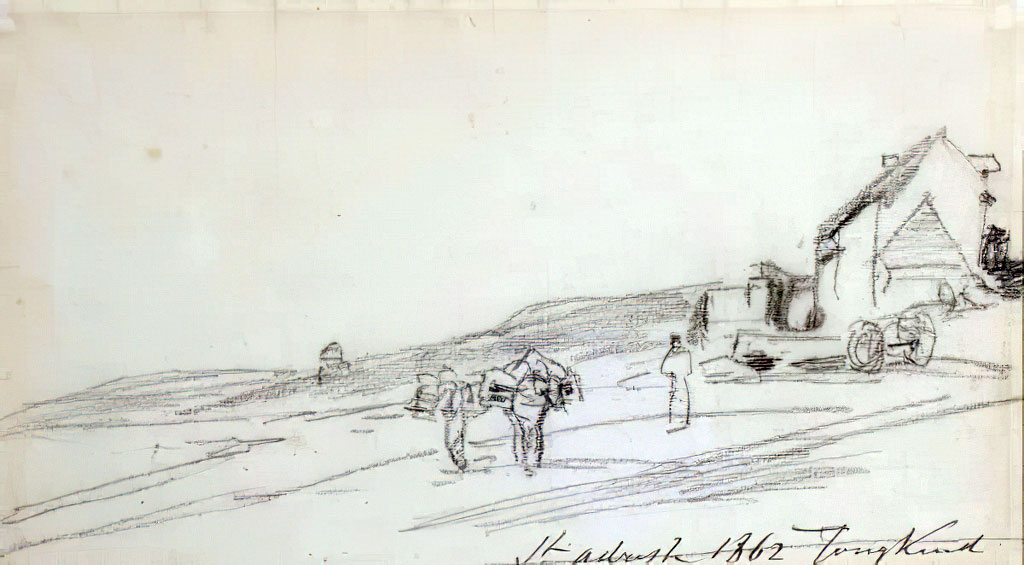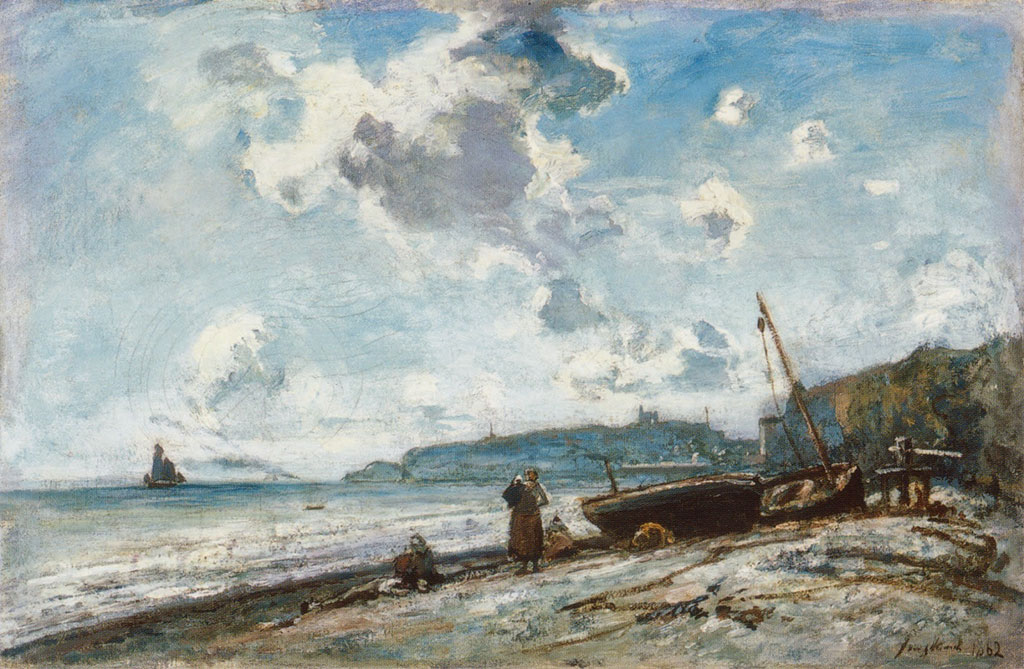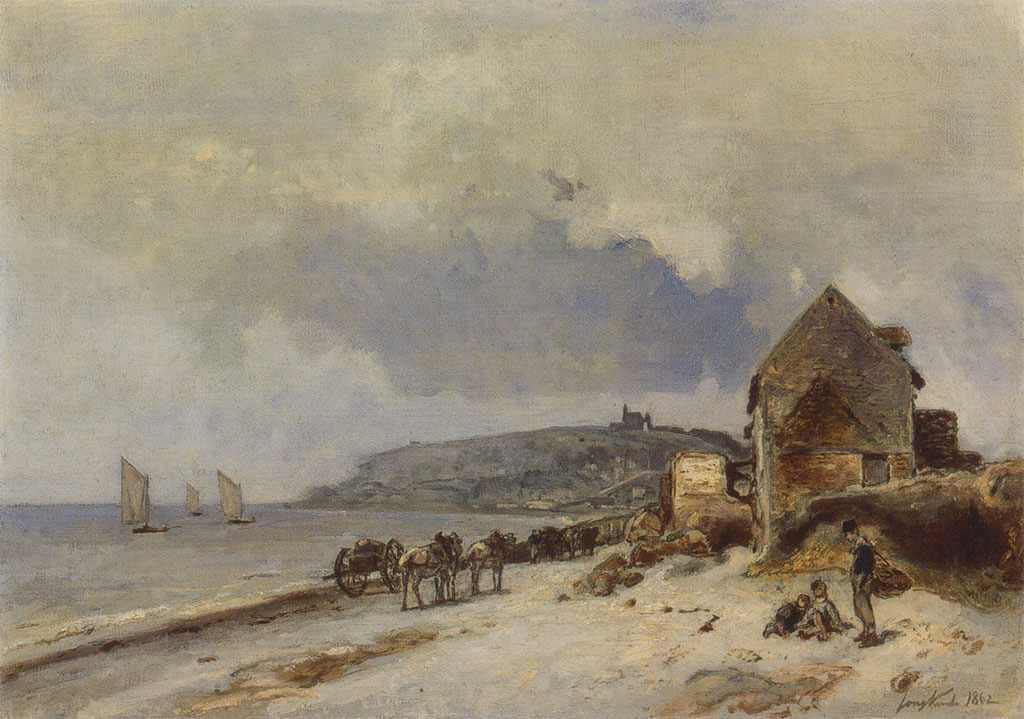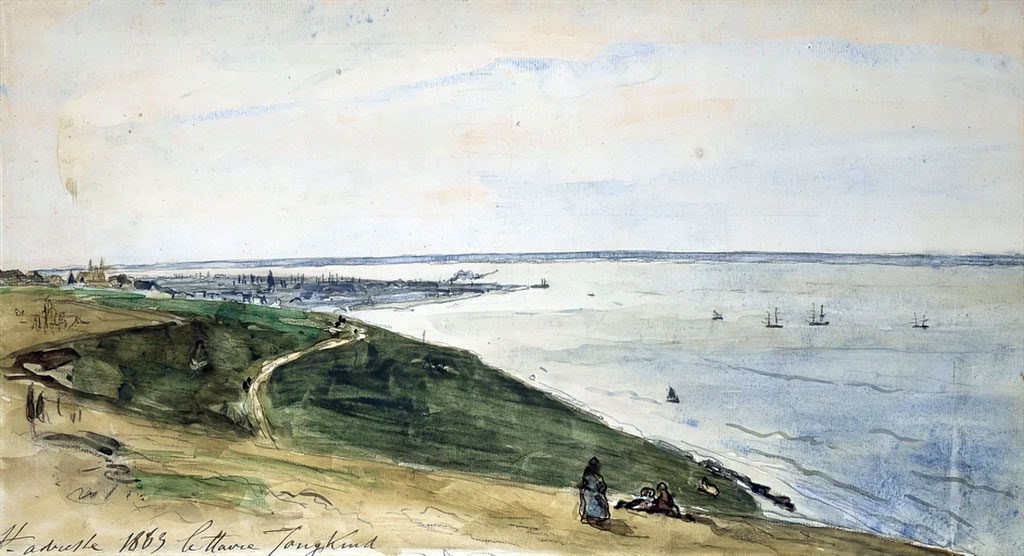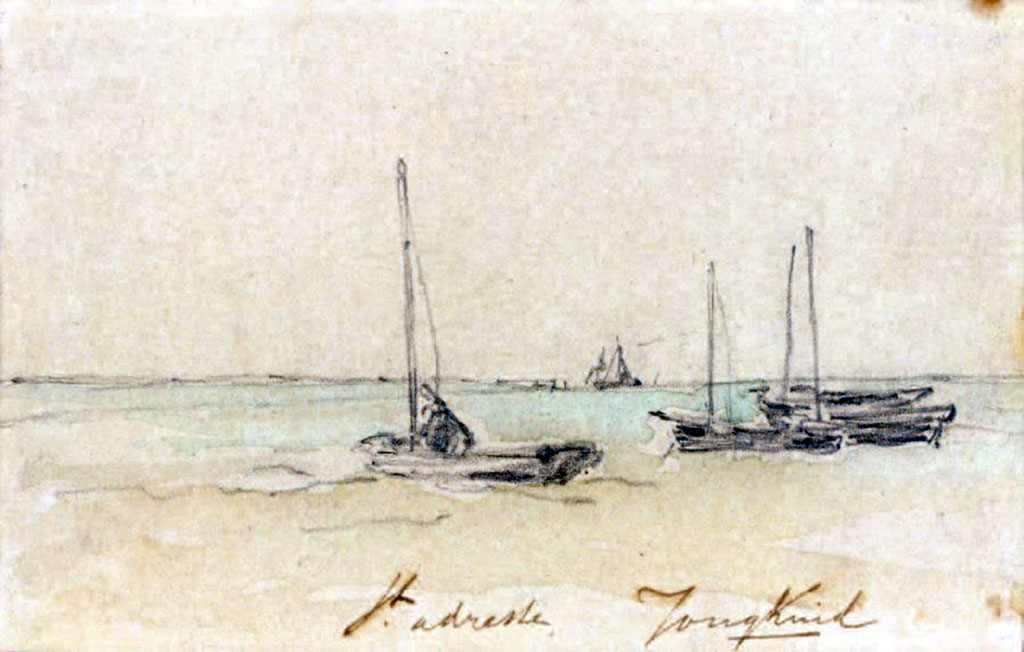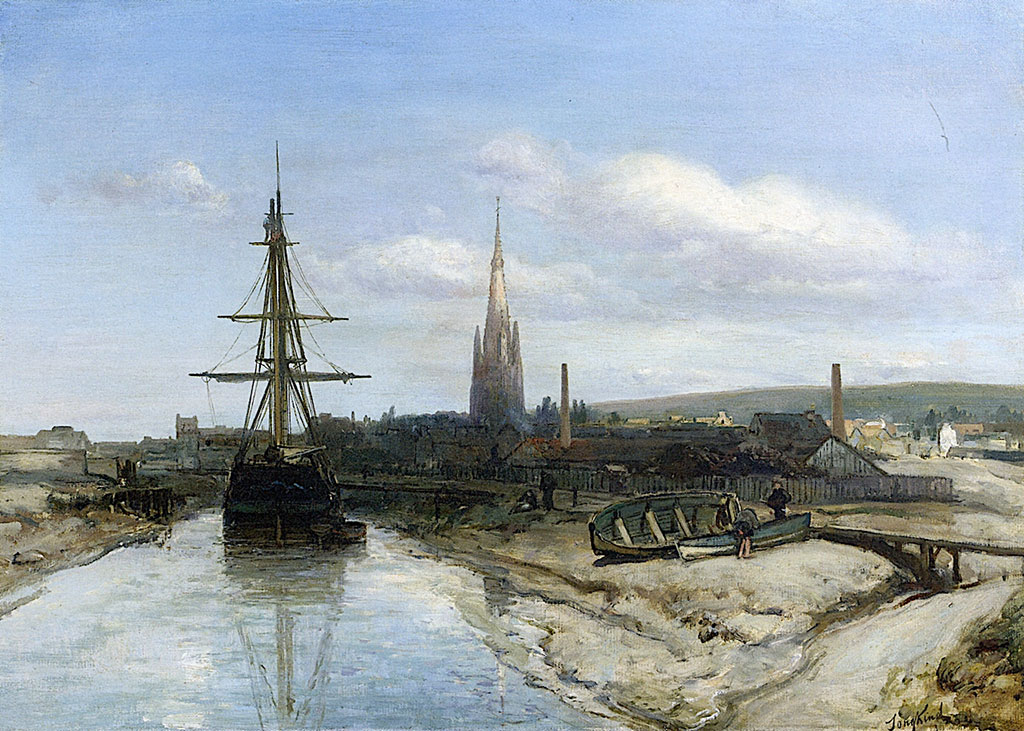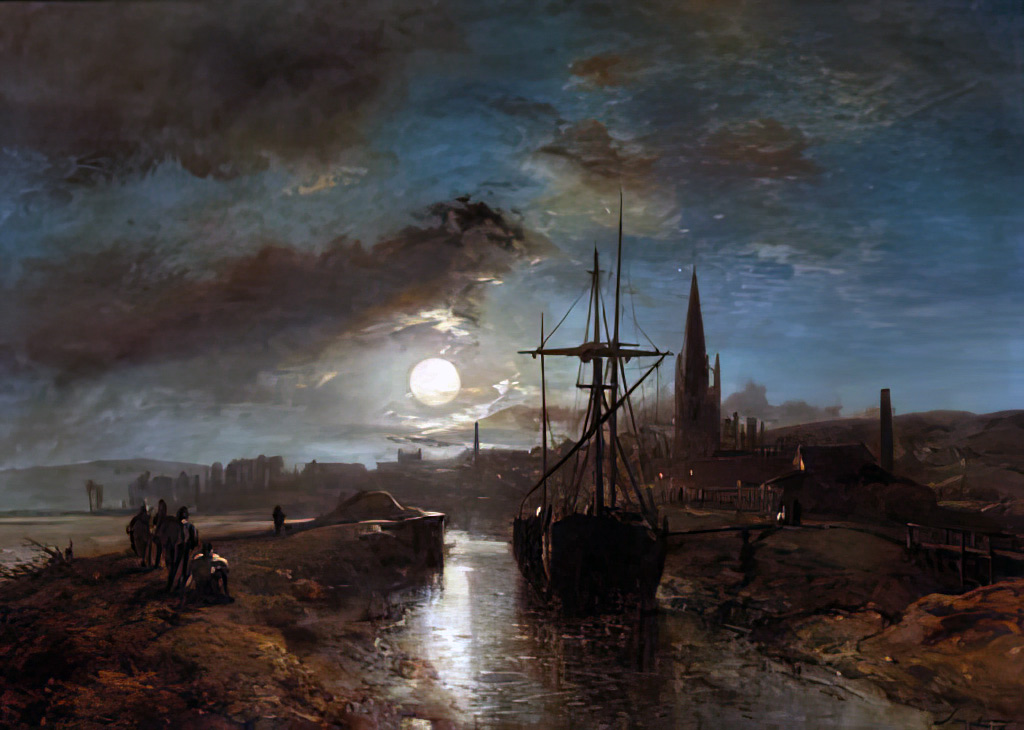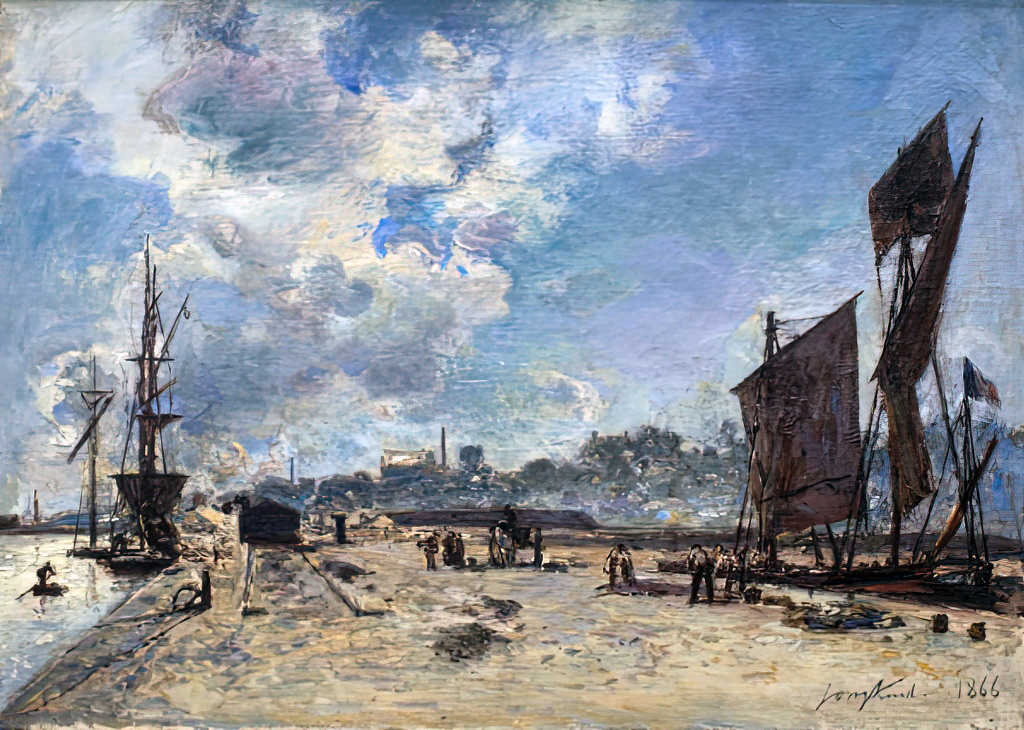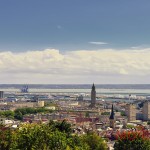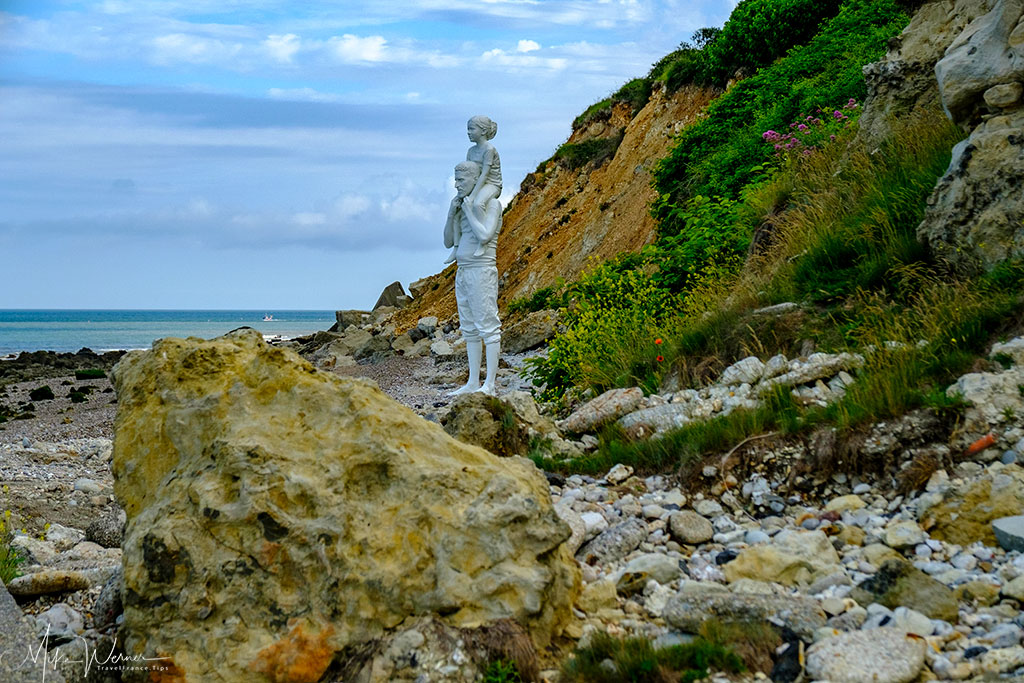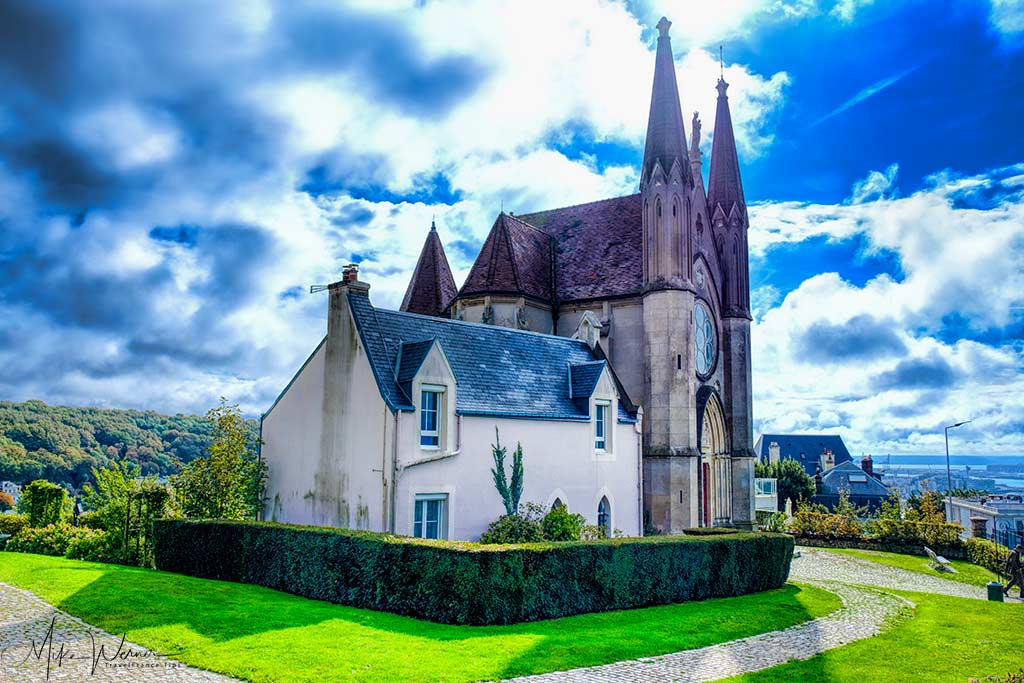This page forms part of a series of pages dedicated to the many artists who painted in Le Havre. A full list of all the artists with a link to their works can be found at the bottom of this page.
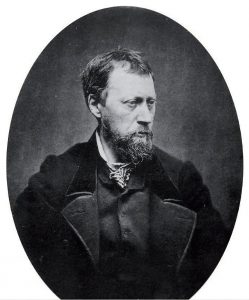
Movement(s): –
Johan Barthold Jongkind (1819 – 1891) was a Dutch artist. He painted many marine landscapes in a free manner and is regarded as a forerunner of the Impressionist movement.
Jongkind was born in the town of Lattrop in the Overijssel province of the Netherlands near the border with Germany. Trained at the art academy in The Hague under Andreas Schelfhout, in 1846 he moved to Montparnasse in Paris, France where he studied under Eugene Isabey and Francois-Edouard Picot.
Two years later, the Paris Salon accepted his work for its exhibition, and he received acclaim from critic Charles Baudelaire and later on from Emile Zola. He was to experience little success, however, and he suffered bouts of depression complicated by alcoholism.
Jongkind returned to live in Rotterdam in 1855, and remained there until 1860. Back in Paris, in 1861 he rented a studio on the rue de Chevreuse in Montparnasse where some of his paintings began to show glimpses of the Impressionist style to come.
In 1862 he met in Normandy, in the famous ferme Saint-Simeon in Honfleur, with some of his artist friends, such as Alfred Sisley, Eugene Boudin, and the young Claude Monet, to all of whom Jongkind served as a mentor. Monet later referred to him as “…a quiet man with such a talent that is beyond words” and credited the “definitive education” of his own eye to Jongkind.
In 1878, Jongkind and his companion Josephine Fesser moved to live in the small town of La Cote-Saint-Andre near Grenoble in the Isere departement in the southeast of France. He died in 1891 in Saint-Egreve, in the same departement. He is buried in the cemetery of La Cote-Saint-Andre.
Click here to read Jongkind’s full bio on Wikipedia.
NOTE: Click on any image below for a bigger version (no new window will open).
NOTE: A black box like this one, means that there is an explanation text about today’s situation of the painting above it.
NOTE: Click on this photo icon ![]() anywhere below a painting to see a photo of what the area looks like today.
anywhere below a painting to see a photo of what the area looks like today.
NOTE: A blue box like this one, means there is an explanation or a note.
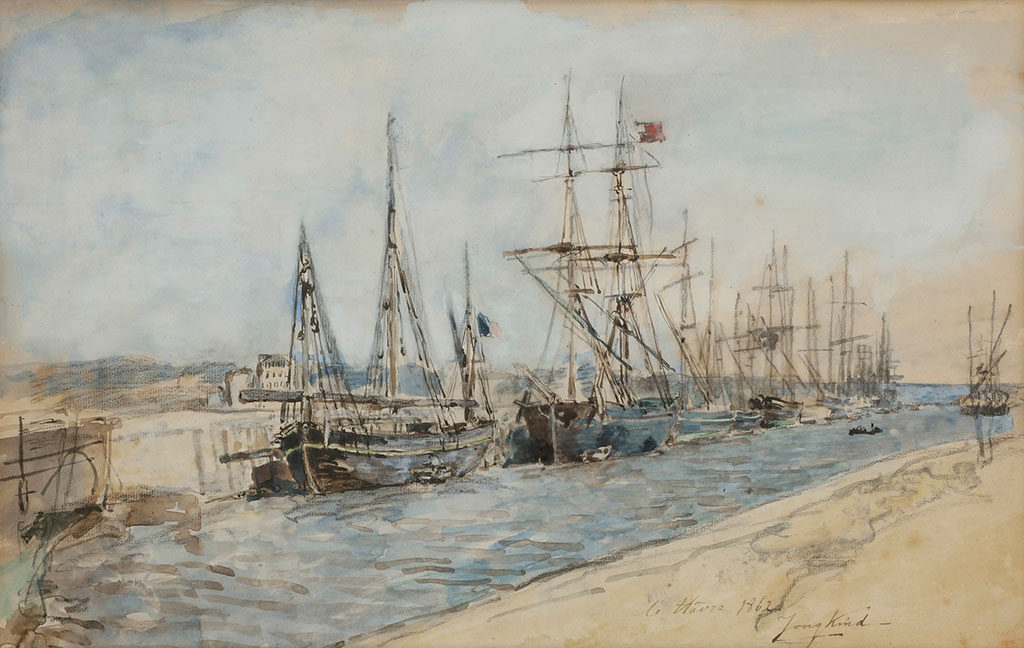
TODAY: The Basin Vauban is a port area used today by pleasure boats. It was where you will find the “Docks” shopping mall and several of Le Havre’s Universities.
Sainte-Adresse
The city of Sainte-Adresse (population: 7,400) is an immediate suburb of Le Havre and lies to the North/West alongside the coast. It shares the same seaside promenade with Le Havre.
NOTE: At the end of Sainte-Adresse you will still find nothing but rocks, apart from a statue placed there in 2018. The area is appropriately called the End of The World (in French “Le Bout du Monde”).
NOTE: Although probably painted on the beach of Le Havre, the view is that of Sainte-Adresse. The church you see on top of the hill still exists and is called “Notre-dame-des-Flots”. If you ever get a chance, visit this little chapel.
Harfleur
Harfleur (population: 8300) is a small city located close to Le Havre on the East. It’s a suburb of Le Havre.
Jongkind painted in several places in France (a link “⇠” to his works per place will appear below when published):
- Auvergne-Rhone-Alpes
- Grenoble
- La Cote-Saint-Andre
- Lyon
- Neyron
- Virieu-sur-Bourbre
- Voiron
- Bourgogne-Franche-Comte (Burgundy)
- Nevers
- Saincaize-Meauce
- Saint-Parize-le-Chatel
- Brittany
- Chateaulin
- Morlaix
- Normandy
- Caen ⇠
- Dieppe ⇠
- Etretat ⇠
- Honfleur ⇠
-
- Trouville-sur-Mer ⇠
- Veules-les-Roses (surroundings only) ⇠
- Occitanie
- Narbonne
- Provence-Alpes-Cote d’Azur
- Avignon
- Marseille
- Toulon
Here are the painters/artists who painted in Le Havre (a “*” indicates that the artist did not worked directly in Le Havre itself, instead worked closeby, a link “⇠” to the artist’s works will appear below when published):
- 🇫🇷 Adam, Edouard Marie ⇠
- 🇷🇺 Beggrov, Alexander ⇠
- 🇫🇷 Binet, George ⇠
- 🇺🇸 Boggs, Frank Myers ⇠
- 🇷🇺 Bogoliubo, Alexei ⇠
- 🇬🇧 Bonington, Richard Parkes ⇠
- 🇫🇷 Boudin, Eugene-Louis ⇠
- 🇫🇷 Braque, Georges ⇠
- 🇫🇷 Bruelle, Gaston ⇠
- 🇬🇧 Callow, William ⇠
- 🇬🇧 Cameron, David Young ⇠
- 🇫🇷 Ciceri, Eugene * ⇠
- 🇫🇷 Coignet, Jules ⇠
- 🇫🇷 Corot, Jean-Baptiste Camille ⇠
- 🇬🇧 Cotman, John Sell ⇠
- 🇬🇧 Cooke, Edward William ⇠
- 🇫🇷 Crepin, Louis-Philippe ⇠
- 🇫🇷 Cyr, Georges Albert ⇠
- 🇫🇷 Dauzats, Adrien * ⇠
- 🇫🇷 de Saint-Delis, Henri ⇠
- 🇫🇷 de Saint-Delis, Rene ⇠
- 🇳🇱 Dommersen, William ⇠
- 🇫🇷 Dubourg, Louis-Alexandre ⇠
- 🇫🇷 Dufy, Jean ⇠
- 🇫🇷 Dufy, Raoul ⇠
- 🇫🇷 Friesz, Othon ⇠
- 🇫🇷 Garneray, Ambroise Louis ⇠
- 🇫🇷 Gernez, Paul-Elie ⇠
- 🇫🇷 Goeneutte, Norbert ⇠
- 🇷🇺 Gritsenko, Nikolai ⇠
- 🇫🇷 Gudin, Theodore ⇠
- 🇫🇷 Guerard, Henri ⇠
- 🇫🇷 Guillaumin, Armand * ⇠
- 🇫🇷 Hervier, Louis ⇠
- 🇬🇧 Holland, James ⇠
- 🇫🇷 Huet, Paul ⇠
- 🇳🇱 Jongkind, Johan Barthold ⇠
- 🇬🇧 Kay, James ⇠
- 🇳🇱 Le Gray, Gustave ⇠
- 🇳🇱 Le Sidaner, Henri * ⇠
- 🇫🇷 Lebourg, Albert ⇠
- 🇬🇧 Lee-Hankey, William ⇠
- 🇫🇷 Lepoittevin, Eugene ⇠
- 🇫🇷 Leprince, Auguste-Xavier ⇠
- 🇫🇷 Letellier, Emile-Andre ⇠
- 🇫🇷 Loir, Luigi ⇠
- 🇫🇷 Loiseau, Gustave ⇠
- 🇫🇷 Luce, Maximilien ⇠
- 🇫🇷 Madelain, Gustave ⇠
- 🇫🇷 Marquet, Albert ⇠
- 🇫🇷 Maufra, Maxime ⇠
- 🇫🇷 Maze, Paul ⇠
- 🇫🇷 Monet, Claude ⇠
- 🇨🇦 Morrice, James Wilson ⇠
- 🇫🇷 Mozin, Charles-Louis ⇠
- 🇫🇷 Noel, Alexandre Jean ⇠
- 🇫🇷 Noel, Jules Achille ⇠
- 🇸🇪 Osslund, Helmer ⇠
- 🇫🇷 Pecrus, Charles Francois ⇠
- 🇫🇷 Petitjean, Edmond Marie ⇠
- 🇩🇰 Pissarro, Camille ⇠
- 🇫🇷 Pissarro, Lucien * ⇠
- 🇬🇧 Prout, Samuel * ⇠
- 🇫🇷 Robert, Hubert ⇠
- 🇫🇷 Roullet, Gaston ⇠
- 🇫🇷 Signac, Paul ⇠
- 🇬🇧 Stanfield, Clarkson Frederick ⇠
- 🇧🇪 Stevens, Alfred Emile Leopold ⇠
- 🇳🇱 Ten Cate, Siebe Johannes ⇠
- 🇳🇴 Thaulow, Fritz ⇠
- 🇫🇷 Thornley, Georges William ⇠
- 🇬🇧 Turner, Joseph Mallord William ⇠
- 🇨🇭 Vallotton, Felix ⇠
- 🇬🇧 Wadsworth, Edward ⇠
NOTE: You can subscribe to our new articles by entering your email address in the box on the right column (or at the very bottom of this article) and clicking on the button “Subscribe”.
You will need to check your incoming emails and validate your subscription. If you can’t see an email from us, check your Spam folder. Without validating your email address, you will not get notifications from us. WE WILL NEVER GIVE YOUR EMAIL ADDRESSES TO ANYONE!
Related Posts
- 10000
- 10000
- 10000
- 10000
- 93
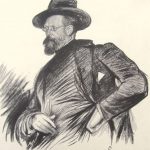 Frank Boggs was an American (and later French) painter (born in the USA, died in France). He studied art in Paris, and travelled between France (Normandy), The Netherlands, Italy and Belgium. He naturelized to French citizenship. He is buried next to his artist son in Paris. Here are some of…
Frank Boggs was an American (and later French) painter (born in the USA, died in France). He studied art in Paris, and travelled between France (Normandy), The Netherlands, Italy and Belgium. He naturelized to French citizenship. He is buried next to his artist son in Paris. Here are some of…

